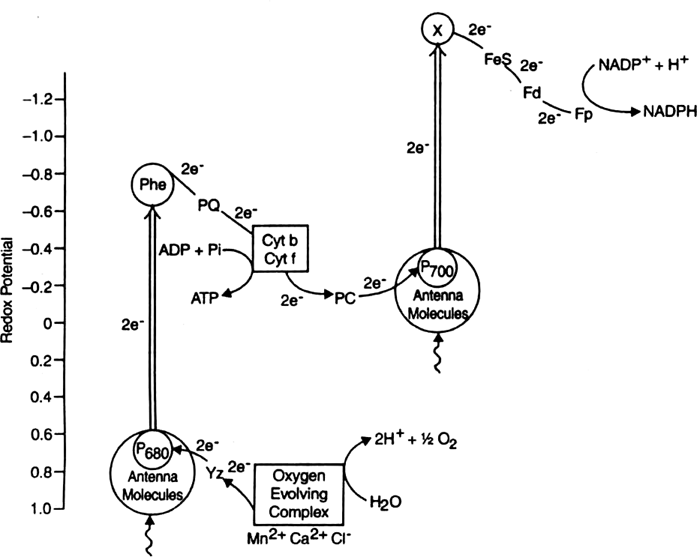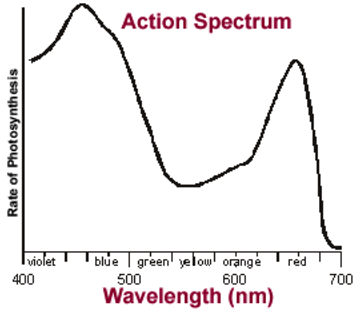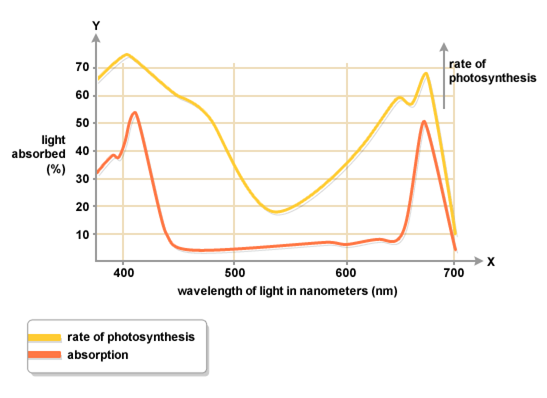Non-Cyclic Photophosphorylation : The electrons lost by P680 (PS-II) are taken up by P700 (PS-I) and do not get back to P680 i.e., unidirectional and hence it is called non- cyclic phosphorylation. It involves both PS I and PS II. In this cycle both ATP and NAD(P)H are formed. 
Fig. Non-cyclic photophosphorylation
|
Photorespiration |
Respiration |
|
1. It is the process by which green plants and some other organisms use sunlight to synthesize nutrients from carbon dioxide and water. |
1. It is the process in living organisms involving the production of energy, typically with the intake of oxygen and the release of carbon dioxide from the oxidation of organic substances. |
|
2. Light and the presence of cholorophyll is required |
2. Light and cholorophyll are not required, |
|
3. Carbon dioxide and water is used and oxygen is released |
3. Oxygen is used and carbon dioxide and water is formed. |
|
4. Occurs only in plants |
4. Occurs in all organisms. |
|
5. Chloroplasts is involved |
5. Mitochondria is involved |
|
6. It stores energy |
6. It release energy. |
Action Spectrum. Action spectrum is a curve which shows relative rates of photosynthesis at The graph of the action spectrum indicates that the maximum photosynthesis takes place in the blue and red parts of visible light. 
Wave length of light in nm Graph of Action Spectrum
Absorption Spectrum. Absorption spectrum is a curve which shows the amount of light of different wavelengths absorbed by a substance or pigment. The absorption spectrum of two chlorophyll (chl “a” and chl “b”) and carotene shows that maximum light absorbed is in the blue and red wavelengths.

Photosystem I [PSI] :
Location : It is present in the membrane of stroma thylakoids and non-appressed parts of grana thylakoids.
Pigment molecules : In PS I the reaction centre chlorophyll a which has an absorption peak at P700.
Reducing agents : The PS I has following reducing agents viz. ferrodoxin, plastoquinone, cytochrome complex, n-plastocyanin.
Function of PS I : In PS I cyclic photophos-phorylation occurs.
Photosystem II [PS II] :
Location : It is present in appressed part of grana thylakoids.
Pigment molecules : It has in the centre special type of chlorophyll ‘a’ molecules called P680.
Reducing agents : PS II has quencher, plastoquinone, cytochrome complex and plastocyanin reducing agents.
Function : In PS II non-cyclic photophosphorylation occurs, alongwith photolysis of water.
